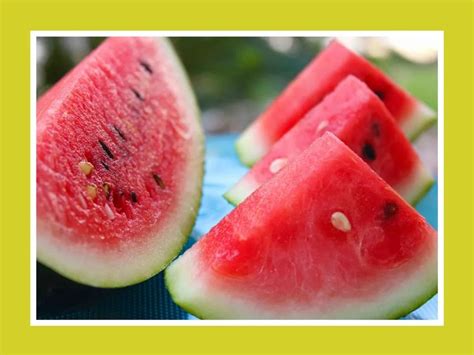
Farmers across the nation are revealing their time-tested secrets to selecting the sweetest watermelons, moving beyond common myths and tapping into years of experience to guide consumers toward the ripest and most flavorful fruit.
Picking the perfect watermelon doesn’t have to be a gamble. According to seasoned farmers, telltale signs like field spots, webbing, and a deep, hollow sound upon tapping are key indicators of sweetness and ripeness. Forget the outdated advice; these experts offer a practical guide to ensuring your next watermelon is a juicy delight.
“The first thing I look for is a large, yellow ground spot,” explains farmer Zachariah Smith. This ground spot, also known as the field spot, indicates where the watermelon rested on the ground while ripening in the sun. “The bigger and yellower the spot, the longer it sat, and the riper it is.” This contradicts the common misconception that a white or pale spot is preferable. Smith, who has been cultivating watermelons for over two decades, emphasizes that sun exposure is crucial for sugar development.
Another crucial factor is the presence of webbing, those brown, vein-like patterns on the watermelon’s surface. Farmer Amy Johnson notes, “Webbing means that bees visited the flower a lot during pollination. The more pollination, the sweeter the watermelon.” This natural process directly influences the fruit’s sugar content, making webbing a desirable characteristic. Johnson also suggests inspecting the stem. “A dried-out stem is a good sign,” she says. “It means the watermelon is no longer taking water from the vine, indicating it’s ripe.”
A third-generation watermelon farmer, Robert Garcia, adds another layer to the selection process: the sound test. “Give it a good thump,” he advises. “A ripe watermelon should sound deep and hollow. If it sounds dull or dense, it’s probably underripe.” Garcia cautions against relying solely on size, noting that larger watermelons aren’t necessarily sweeter. “It’s about maturity, not just size,” he stresses.
Beyond these primary indicators, farmers also consider the overall shape and appearance of the watermelon. A symmetrical shape, free from bruises or blemishes, is generally a good sign. However, minor imperfections are often unavoidable and don’t necessarily detract from the fruit’s quality. The weight of the watermelon, relative to its size, can also be a useful indicator. A watermelon that feels heavy for its size is likely to be juicy and full of flavor.
The farmers collectively debunk the myth that slapping a watermelon is a reliable way to determine ripeness. While the sound test is valid, simply slapping the fruit without listening for a specific tone is unlikely to yield accurate results. Instead, they advocate for a combination of visual and auditory cues, along with a healthy dose of experience.
The timing of watermelon season also plays a significant role in ensuring optimal sweetness. Watermelons are typically at their peak during the summer months, when they receive ample sunlight and warmth. Buying watermelons in season increases the likelihood of selecting a ripe and flavorful fruit. Farmers markets and local produce stands are often the best sources for fresh, locally grown watermelons.
Consumers can also inquire about the specific variety of watermelon being sold. Different varieties have different characteristics, including sweetness levels, texture, and size. Some popular varieties known for their sweetness include Sugar Baby, Crimson Sweet, and Jubilee. Understanding the characteristics of different varieties can help consumers make informed choices based on their personal preferences.
Furthermore, the farmers emphasize the importance of proper storage. Watermelons should be stored in a cool, dry place until they are cut. Once cut, they should be refrigerated to maintain their freshness and prevent spoilage. Properly stored watermelons can last for several days, allowing consumers to enjoy their sweet and refreshing flavor for an extended period.
In summary, selecting the sweetest watermelon involves a combination of observation, experience, and knowledge. By paying attention to the field spot, webbing, stem condition, and sound, consumers can significantly increase their chances of choosing a ripe and flavorful fruit. The farmers’ collective wisdom provides a practical guide to navigating the watermelon selection process and enjoying the sweet rewards of their expertise.
Frequently Asked Questions (FAQ) about Selecting Sweet Watermelons
Q1: What is the significance of the “field spot” on a watermelon?
A1: The field spot, also known as the ground spot, is the area where the watermelon rested on the ground while ripening. According to farmer Zachariah Smith, “The bigger and yellower the spot, the longer it sat, and the riper it is.” A large, yellow field spot indicates that the watermelon has had ample time to develop its sugars, resulting in a sweeter and more flavorful fruit. Conversely, a white or pale field spot suggests that the watermelon may be underripe. The color of the field spot is a crucial indicator of ripeness, providing valuable information about the watermelon’s maturity and sweetness. The spot develops as the melon matures on the vine, shielded from direct sunlight, allowing for optimal sugar concentration.
Q2: What does “webbing” on a watermelon indicate, and why is it desirable?
A2: Webbing refers to the brown, vein-like patterns that appear on the surface of a watermelon. Farmer Amy Johnson explains, “Webbing means that bees visited the flower a lot during pollination. The more pollination, the sweeter the watermelon.” These patterns are a result of the pollination process, where bees transfer pollen from flower to flower. The more pollination that occurs, the more sugars are produced within the watermelon, leading to a sweeter taste. Therefore, webbing is a desirable characteristic, indicating that the watermelon has undergone thorough pollination and is likely to be exceptionally sweet. The presence of webbing is a natural sign of a well-pollinated and potentially delicious watermelon.
Q3: How reliable is the “sound test” for determining a watermelon’s ripeness, and what should I listen for?
A3: The sound test, which involves thumping or tapping the watermelon, can be a reliable indicator of ripeness when performed correctly. According to third-generation watermelon farmer Robert Garcia, “Give it a good thump. A ripe watermelon should sound deep and hollow. If it sounds dull or dense, it’s probably underripe.” The deep, hollow sound suggests that the flesh inside the watermelon is firm and juicy, while a dull or dense sound indicates that the watermelon may be underripe and lacking in flavor. However, Garcia cautions against relying solely on the sound test and recommends using it in conjunction with other visual cues, such as the field spot and webbing, for a more accurate assessment of ripeness. The sound test is most effective when you compare the sound of several watermelons, allowing you to discern the subtle differences that indicate ripeness.
Q4: Are larger watermelons always sweeter than smaller ones?
A4: No, larger watermelons are not necessarily sweeter than smaller ones. Robert Garcia emphasizes that “It’s about maturity, not just size.” While size can be an indicator of overall growth, it does not directly correlate with sweetness. A smaller watermelon that has fully ripened on the vine may be sweeter than a larger watermelon that was harvested prematurely. Factors such as sunlight exposure, pollination, and variety play a more significant role in determining the sweetness of a watermelon. Therefore, it’s important to consider other indicators of ripeness, such as the field spot, webbing, and sound, in addition to size when selecting a watermelon. Focusing solely on size can lead to disappointment, as a larger watermelon may not always deliver the desired level of sweetness.
Q5: What are some popular varieties of watermelons known for their sweetness, and where is the best place to buy them?
A5: Several varieties of watermelons are known for their exceptional sweetness, including Sugar Baby, Crimson Sweet, and Jubilee. Sugar Baby watermelons are small and round with a dark green rind and bright red flesh, known for their concentrated sweetness. Crimson Sweet watermelons are larger and oval-shaped with a distinctive striped rind and juicy, flavorful flesh. Jubilee watermelons are also large and oval-shaped, with a light green rind and sweet, tender flesh. The best place to buy these and other varieties of watermelons is often at farmers markets and local produce stands. These venues typically offer fresh, locally grown watermelons that have been allowed to ripen fully on the vine, resulting in optimal sweetness and flavor. Inquiring about the specific variety being sold can also help consumers make informed choices based on their personal preferences. These smaller venues can often give more information about the farms the melons originated from, and growing practices.
In-Depth Analysis and Expanded Context
The seemingly simple act of selecting a watermelon is revealed, through the insights of seasoned farmers, to be a nuanced process that goes far beyond mere guesswork. Their combined knowledge, gleaned from years of hands-on experience, provides a practical guide for consumers seeking to avoid the disappointment of a bland or unripe fruit. The farmers’ revelations challenge common misconceptions and offer a deeper understanding of the factors that contribute to watermelon sweetness.
The emphasis on the field spot as a crucial indicator of ripeness is particularly noteworthy. This challenges the widely held belief that a white or pale spot is preferable. Instead, the farmers assert that a large, yellow field spot signifies that the watermelon has had ample time to ripen in the sun, allowing for maximum sugar development. This highlights the importance of sunlight in the ripening process and underscores the fact that watermelons, like many fruits, require sufficient sun exposure to achieve their full potential. The size and color of the field spot serve as a visual marker of this process, providing consumers with a tangible way to assess the watermelon’s maturity.
The significance of webbing, those intricate patterns on the watermelon’s surface, adds another layer of complexity to the selection process. The farmers’ explanation that webbing indicates thorough pollination sheds light on the vital role that bees play in watermelon cultivation. More pollination translates to more sugars within the fruit, resulting in a sweeter and more flavorful watermelon. This highlights the interconnectedness of nature and the importance of supporting pollinator populations, not only for watermelon production but also for the overall health of the ecosystem. The webbing serves as a visual testament to the bees’ hard work, transforming the watermelon’s surface into a map of sweetness.
The sound test, a traditional method for assessing watermelon ripeness, is further refined by the farmers’ insights. While the act of thumping a watermelon is widely practiced, the farmers emphasize the importance of listening for a specific tone. A deep, hollow sound suggests that the flesh inside the watermelon is firm and juicy, while a dull or dense sound indicates that the watermelon may be underripe. This subtle distinction requires a trained ear and a degree of experience, highlighting the artful nature of watermelon selection. The sound test, when performed correctly, provides valuable information about the watermelon’s internal structure and its potential for sweetness.
The farmers’ collective wisdom also addresses the common misconception that larger watermelons are always sweeter than smaller ones. They emphasize that maturity, rather than size, is the primary determinant of sweetness. A smaller watermelon that has fully ripened on the vine may be sweeter than a larger watermelon that was harvested prematurely. This underscores the importance of allowing watermelons to reach their full potential before harvesting, ensuring that they have had sufficient time to develop their sugars and flavors. The focus on maturity over size encourages consumers to look beyond superficial characteristics and to prioritize the factors that truly contribute to watermelon sweetness.
The timing of watermelon season is another crucial consideration. Watermelons are typically at their peak during the summer months, when they receive ample sunlight and warmth. Buying watermelons in season increases the likelihood of selecting a ripe and flavorful fruit. Farmers markets and local produce stands are often the best sources for fresh, locally grown watermelons, as these venues typically offer watermelons that have been allowed to ripen fully on the vine. Supporting local farmers and purchasing watermelons in season not only ensures optimal flavor but also contributes to the sustainability of the agricultural system.
The farmers’ insights into different watermelon varieties provide consumers with additional tools for making informed choices. Some varieties, such as Sugar Baby, Crimson Sweet, and Jubilee, are known for their exceptional sweetness. Understanding the characteristics of different varieties can help consumers select watermelons that align with their personal preferences. For example, those who prefer a smaller, intensely sweet watermelon may opt for the Sugar Baby variety, while those who prefer a larger, juicy watermelon may choose the Crimson Sweet or Jubilee varieties.
The farmers also emphasize the importance of proper storage. Watermelons should be stored in a cool, dry place until they are cut. Once cut, they should be refrigerated to maintain their freshness and prevent spoilage. Properly stored watermelons can last for several days, allowing consumers to enjoy their sweet and refreshing flavor for an extended period. Proper storage not only extends the shelf life of watermelons but also helps to preserve their quality and flavor.
In conclusion, the farmers’ collective wisdom provides a comprehensive guide to selecting the sweetest watermelons. By paying attention to the field spot, webbing, stem condition, sound, and variety, consumers can significantly increase their chances of choosing a ripe and flavorful fruit. The farmers’ insights challenge common misconceptions and offer a deeper understanding of the factors that contribute to watermelon sweetness. By following their advice, consumers can avoid the disappointment of a bland or unripe watermelon and enjoy the sweet rewards of their expertise. The farmers’ revelations transform the simple act of selecting a watermelon into a more informed and rewarding experience, allowing consumers to appreciate the art and science of watermelon cultivation. The shared advice is ultimately a roadmap to a better, more flavorful summer, one watermelon at a time. The deeper knowledge also allows consumers to better connect with the food they consume and appreciate the complexities involved in bringing high-quality produce from the field to the table. The information shared not only enhances the consumer experience but also promotes a greater understanding and appreciation of the agricultural process.









